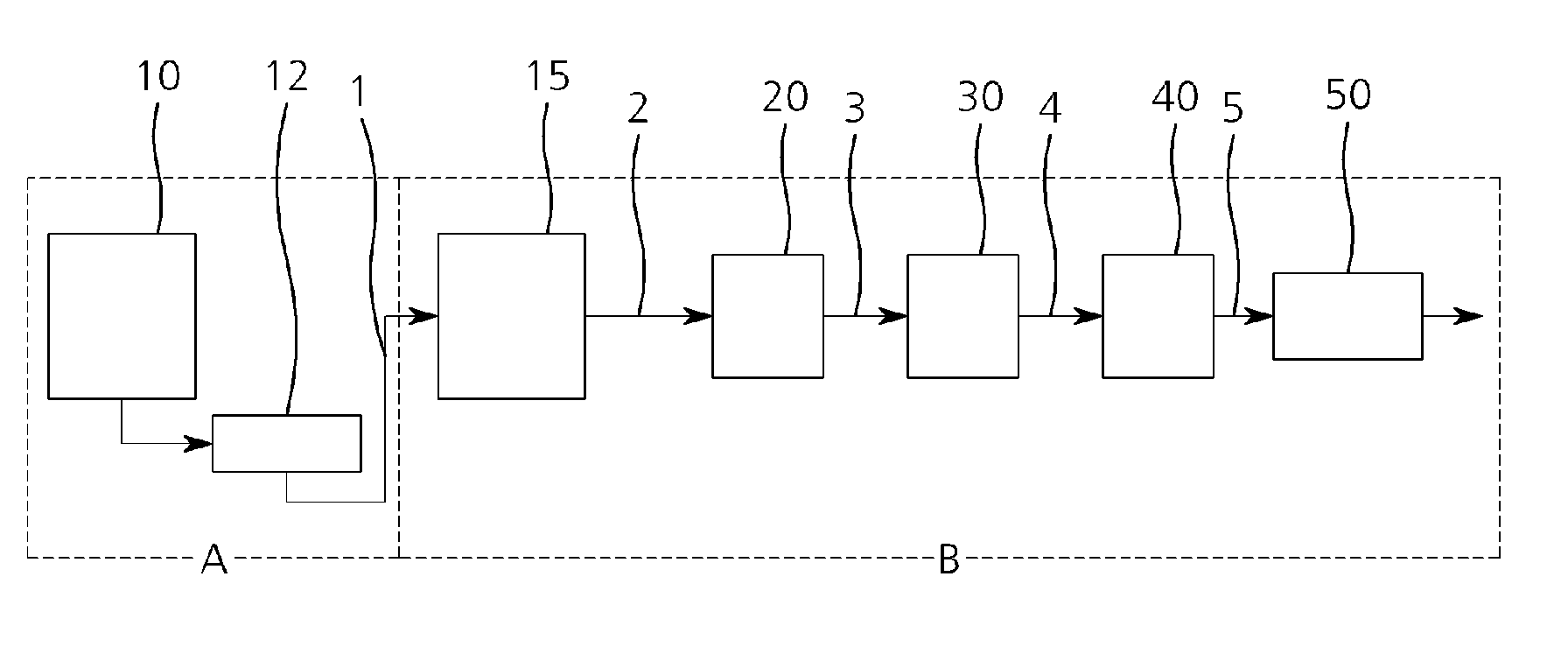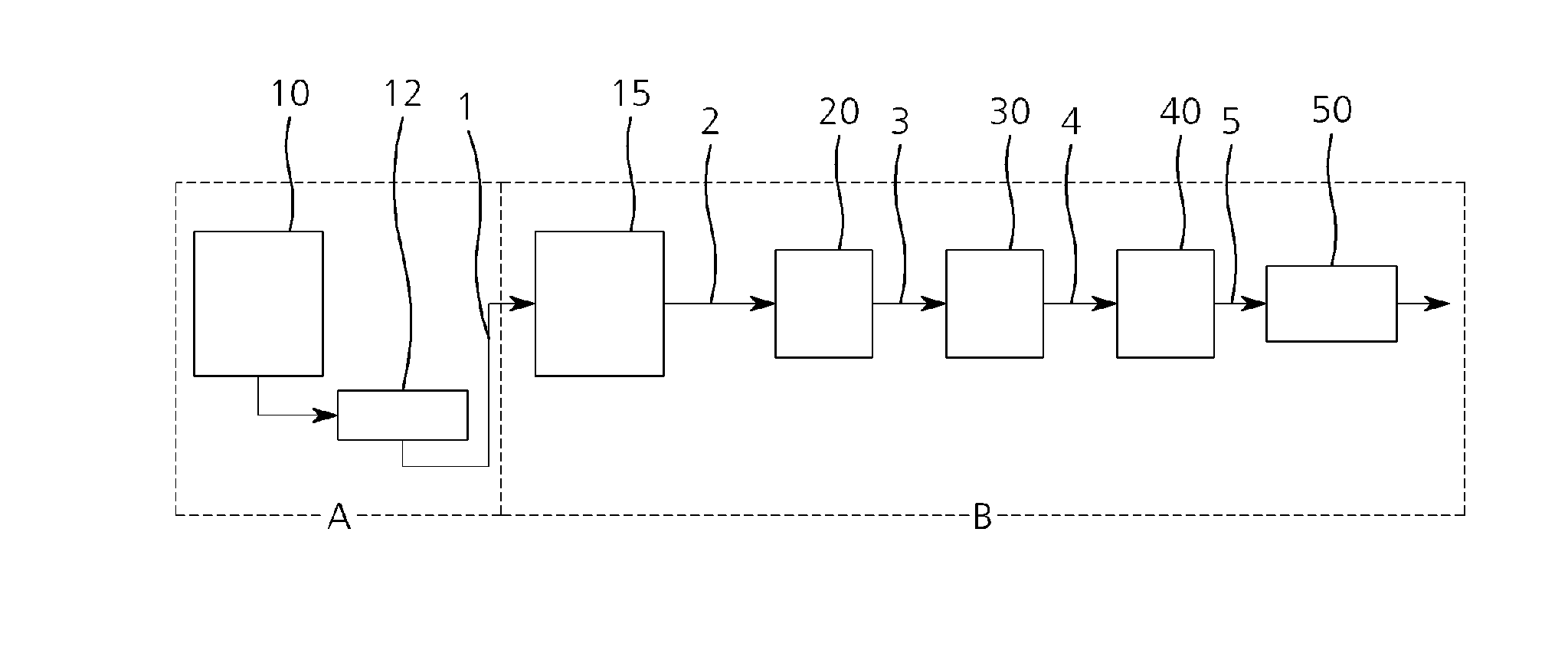Method for continuously producing thermoplastic resin from conjugated diene and thermoplastic resin produced by the same
a technology of thermoplastic resin and conjugated diene, which is applied in the field of continuous production of thermoplastic resin from conjugated diene and thermoplastic resin produced by the same, can solve the problems of inefficient bulk suspension process, difficult to manage the physical properties of abs, and additional problems, so as to maximize physical properties, improve color effects, and high the effect of final product productivity
- Summary
- Abstract
- Description
- Claims
- Application Information
AI Technical Summary
Benefits of technology
Problems solved by technology
Method used
Image
Examples
example 1
[0086]After 18.5 wt % of a butadiene monomer, 6.5 wt % of styrene and 75 wt % of toluene are fed into a first reactor, n-butyl lithium (NBL) as a metal catalyst and t-methylethylenediamine (TMEDA) as a vinyl modifier are added thereto. The metal catalyst and the vinyl modifier are used in amounts of 0.12 parts by weight and 0.004 parts by weight, respectively, based on 100 parts by weight of the mixture of the butadiene monomer and the styrene monomer. The mixture is polymerized at 50° C. for 60 min. After the conversion of the polymerization mixture is confirmed to reach 100%, water as a polymerization inhibitor and THF are added to quench the polymerization. The polymerization inhibitor and the THF are used in amounts of 0.12 parts by weight and 0.24 parts by weight, based on 100 parts by weight of the mixture of the butadiene monomer and the styrene monomer. Thereafter, the toluene is removed from the rubber solution using a twin-screw extruder until the content of the rubber com...
examples 2-5
[0089]The procedure of Example 1 is repeated except that the amounts of the components fed into the first reactor are changed as shown in Table 1.
[0090]
TABLE 1Example No.12345First reactor [RubberButadienewt %18.518.518.518.518.5polymerization reactor]Styrene6.56.56.56.56.5(wt %)Toluene7575757575OrganometallicParts by weight0.030.030.030.030.03catalystrelative to 100Vinyl groupparts by weight0.0040.0040.0040.0040.004modifierof the monomerWatermixture0.120.150.200.240.30THF0.240.300.450.480.18Second reactorSolid content (%)25Reaction temperature (° C.)112112112111112Retention time (hr)1Third reactorSolid content (%)45Reaction temperature (° C.)126125126125126Retention time (hr)2Fourth reactorSolid content (%)63Reaction temperature (° C.)135135135135135Retention time (hr)2Physical propertiesYI3.14.23.63.44.0SilverXXXXXGloss5652405355rps (μm)0.840.990.160.900.96Impact strength2221202322Fluidity2223272224
PUM
| Property | Measurement | Unit |
|---|---|---|
| temperature | aaaaa | aaaaa |
| pressure | aaaaa | aaaaa |
| temperature | aaaaa | aaaaa |
Abstract
Description
Claims
Application Information
 Login to View More
Login to View More - R&D Engineer
- R&D Manager
- IP Professional
- Industry Leading Data Capabilities
- Powerful AI technology
- Patent DNA Extraction
Browse by: Latest US Patents, China's latest patents, Technical Efficacy Thesaurus, Application Domain, Technology Topic, Popular Technical Reports.
© 2024 PatSnap. All rights reserved.Legal|Privacy policy|Modern Slavery Act Transparency Statement|Sitemap|About US| Contact US: help@patsnap.com









